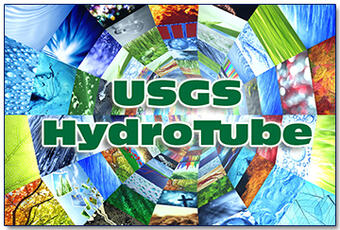Hydrotube
Surface Water Measurement and Inspection (SWAMI) Video Index

Installing SWAMI on a PDA
This video shows how to install the SWAMI electronic field form onto a Personal Data Assistant (PDA).
Installing SWAMI_pc on a PC
This video shows how to install the SWAMI_pc electronic field form onto a Personal Computer (PC).
Installing and configuring scripts for SWAMI
This video shows how to install the UNIX scripts to create files of gaging stations, stage-discharge rating curves, station sensors, and meters that are required when using SWAMI.
Look and feel of SWAMI and SWAMI_PC
This video provides a general overview of SWAMI.
Discharge Measurement-General information
This video provides an overview of the discharge measurement tasks in SWAMI.
Discharge Measurement-General staging
This video provides an overview of staging ADCP and ADV measurements in SWAMI.
Discharge Measurement: New channel > Q-method > Estimated
This video shows how to document a discharge measurement that is an estimate.
Discharge Measurement: New channel > Q-method > Flume
This video shows how to document a discharge measurement made using a flume.
Discharge Measurement: New channel > Q-method > Midsection > ADV (staged)
This video shows how to document a mid-section discharge measurement made with an ADV. The ADV data is imported in the field.
Discharge Measurement: New channel > Q-method > Midsection-AA or Pygmy
This video shows how to document a mid-section discharge measurement made with mechanical current meters that include the Price AA or pygmy meters.
Discharge Measurement - New channel-Q-method - Volumetric
This video shows how to document a volumetric discharge measurement. This volumetric measurement is specific to streamflows small enough to be collected in a single container.
Discharge Measurement: New channel > Q-method > Weir
This video shows how to document a discharge measurement made using a weir.
Discharge Measurement: New channel > Q-method > ADCP—staging
This video shows how to document a moving boat ADCP discharge measurement.
Control Inspection
This video shows how to document a gaging station control inspection.
Sensor Inspections (GH types): float tape, staff, ETG, max/min
This video shows how to document the following sensor types: float tape, staff gage, electronic tape gage (ETG), and maximum and minimum stage indictator clips.
Sensor Inspections (GH types)--radar, ww, staff, RP, CSG
This video shows how to document the following sensor types: radar, wire-weight gage, staff gage, reference point, and crest stage gage (CSG). In this example, measuring point elevations for the reference point and crest stage gage are not configured in SiteVisit.
Sensor Inspections (GH types): PT, WW, Staff, RP, CSG
This video shows how to document the following sensor types: pressure transducer, wire-weight gage, staff gage, reference point, and crest stage gage (CSG). In this example, measuring point elevations for the reference point and crest stage gage are configured in SiteVisit.
GZF Inspection
This video shows how to document a gage height of zero flow (GZF) inspection.
High Water Marks
This video shows how to document high-water marks.
Stilling Well Inspection
This video shows how to document a stilling-well inspection.
Miscellaneous Information
This video provides an overview of the miscellaneous information (Misc. Information) task.
SensorQE
This video shows how to use the Sensor Quick Entry feature (SensorQE).
Uploading to SiteVisit
This video shows two methods of uploading SWAMI files into SiteVisit.
Using Stylesheets
This video provides an overview of how to use stylesheets to view SWAMI data.
Using SWAMI at Index-Velocity Stations
This video provides best practices for documenting index-velocity equipment servicing and overall use of SWAMI at index-velocity stations.
Using SWAMI for Tidal Discharge Measurements
This video shows how to use SWAMI to document a large number of individual discharge measurements made during a tidal cycle that are part of a single site visit.
Best Practices for Editing Information in SiteVisit When Using SWAMI
This video outlines the best practices for maintaining and editing information in NWIS SiteVisit when using SWAMI. Editing options for water science centers are explained in detail. Requirements for documenting changes are provided and important considerations are presented.
Please contact gs-w_fc_swami_help@usgs.gov for all SWAMI video page help and information.
« Return to Available Distance Learning Training and Distance Learning Training in Development

